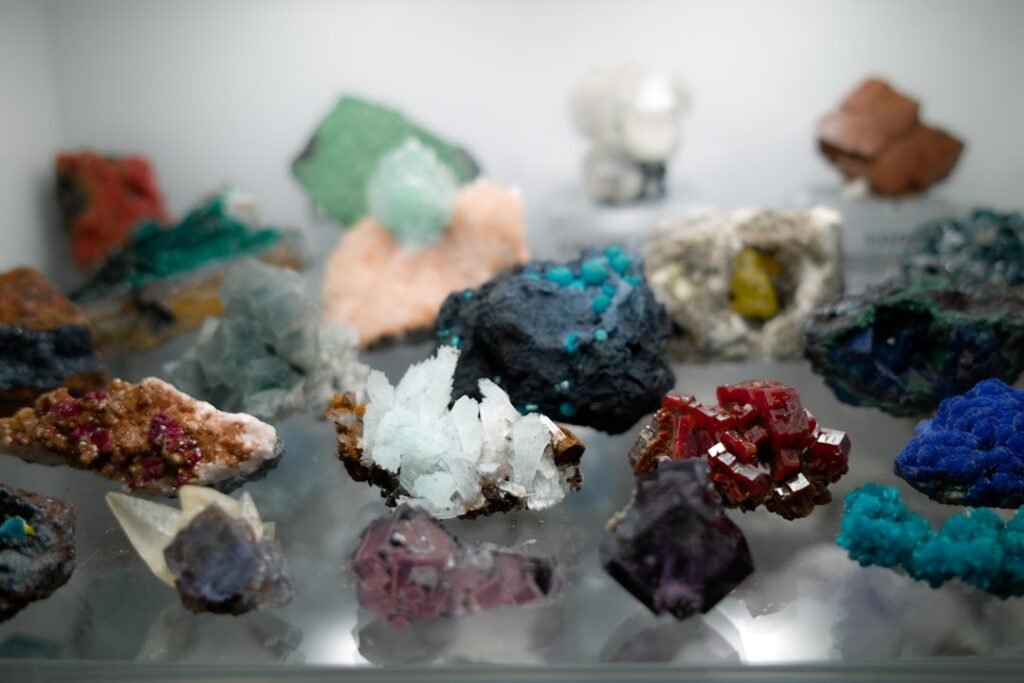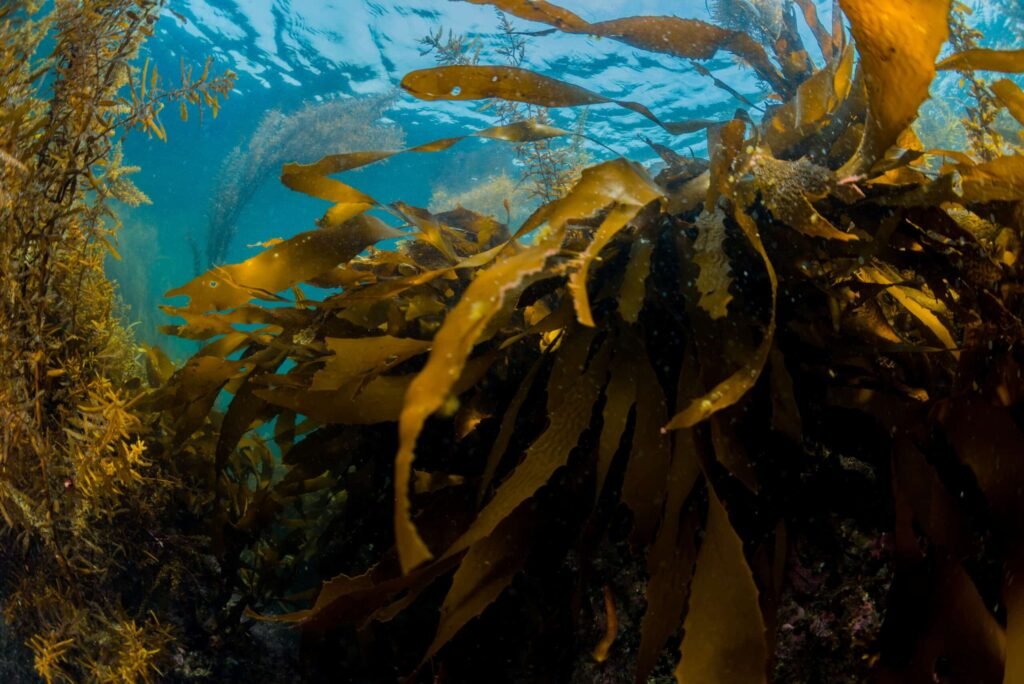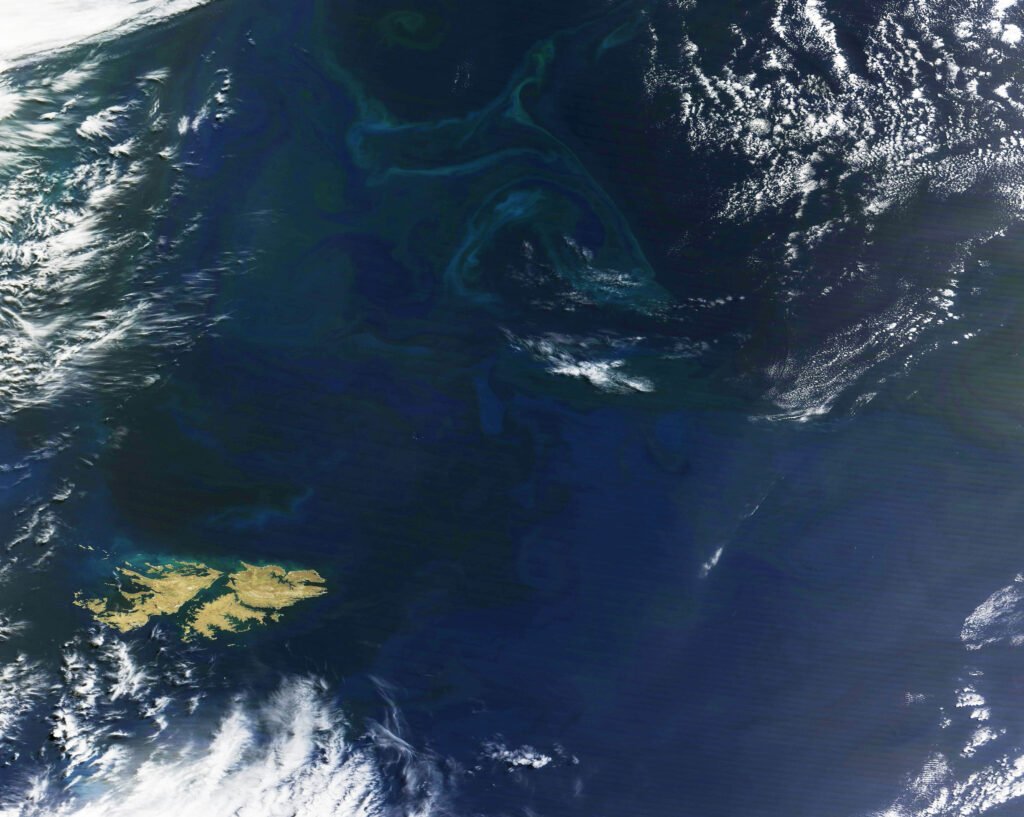Every time a rock changes color underground, it’s telling a story about heat, pressure, and the restless engine driving our planet. The hues we see at the surface – smoky greens, bruised blues, iron reds – are not cosmetic quirks, but fingerprints left by violent journeys miles below. For decades, those clues were easy to miss or dismiss as surface weathering. Now, a new wave of tools is decoding the palette, transforming rock colors into hard numbers about depth, temperature, and tectonic stress. The result is a surprisingly intimate window into the deep Earth, and it’s changing how scientists read the planet’s past and forecast its future.
The Hidden Clues

What if a rock could replay the thunder of a mountain being born or the whisper of a plate sliding into the mantle? Color is that playback – subtle shifts in shade that reveal when iron swapped partners, when pressure squeezed atoms closer, or when a mineral jumped into a new crystal form. Stand at a roadcut and you’ll see it: garnet pebbles deep red at the core, slightly different at the rim, like tree rings inked in wine. Each ring marks changing conditions during metamorphism, a timeline dyed into the stone. These are not artistic accidents; they’re records.
I still carry a pocket hand lens, because once you start noticing, the landscape becomes a gallery. Blueschist with its steely blue glaucophane hints at cold, high-pressure subduction, while the apple-green of serpentine flags rocks transformed by water sneaking into the mantle. Even ordinary-looking sandstones can redden or bleach as oxygen levels swing during burial and uplift. The trick is learning to separate the deep story from the surface edits. Modern instruments make that difference visible.
From Ancient Tools to Modern Science

Geologists used to rely on a practiced eye, a notebook, and a compass – powerful tools, but limited when colors blended or fooled the senses. Today, the field kit includes portable Raman spectrometers and hyperspectral cameras that capture hundreds of color channels beyond what we can see. Back in the lab, diamond-anvil cells squeeze tiny crystals to mantle pressures, while synchrotron X-rays track how electronic bonds respond in real time. This means we can link a precise shade of green or red to a specific pressure-temperature pathway, rather than guessing from experience alone. The leap from sketches to spectra has turned field impressions into testable hypotheses.
Even thin sections – those paper-slim slices of rock glued to glass – have become data-rich landscapes. Under polarized light, minerals flash colors that shift with orientation, a property called pleochroism that reveals internal structure and strain. Machine-learning models now scan those patterns to map gradients of heat and pressure across a single grain. The result is faster, more repeatable interpretations that hold up across different labs and different continents. The old art of the eye is still there, just sharpened by physics and code.
The Physics of Color in the Deep

Most mineral colors come from the way electrons absorb and pass on light – change the local geometry of atoms, and you shift which wavelengths get eaten. Pressure squeezes polyhedra, heat rearranges ions, and valence states flip, especially in iron-bearing minerals common across the crust and mantle. That’s why a garnet can drift from deep claret to rusted orange as its composition evolves, or why omphacite in eclogite leans green when forged at crushing depths. Charge-transfer processes and crystal-field effects are the unsung painters here, nudging absorption bands across the visible spectrum. You don’t need a lab to see it; a simple color shift can be the first sign of a phase transition.
Some changes are reversible and subtle, others are like crossing a threshold. Quartz morphing into coesite and stishovite at high pressure won’t give you a rainbow, but accessory minerals nearby may. Jadeite-rich rocks that form in subduction zones often carry a cool green signature that flags their journey. In experimental setups, even slight increases in pressure can tweak spin states and bend colors by a shade you can measure. Those shifts become calibration points that let us back-calculate depth and temperature from rocks that made the trip and returned.
Fingerprints of Pressure and Heat

Metamorphic facies are like neighborhoods in the city of heat and pressure: greenschist, amphibolite, granulite, blueschist, eclogite. Each has its palette, and once you learn the map, a cliff face becomes a cross-section through a tectonic story. Eclogites with crimson garnet and green omphacite tell of crust sent deep into the mantle, then exhumed in a tectonic elevator. Blueschists, marked by that signature blue glaucophane, whisper of subduction zones where rocks were pressed hard but kept cool by plunging slabs. Even within a single garnet, color zoning records a climb through pressure like a mountaineer’s logbook.
Geobarometers and geothermometers still rely on chemistry, but color acts as a fast triage and a sanity check. A run of bleached sandstones across an oil field can outline past fluid pathways; rusty halos around fractures can timestamp when oxygenated waters arrived. In some ultramafic rocks, the delicate shift from olive to bottle-green serpentine flags the presence of water at depth, a clue tied to seismic behavior. Where outcrops are sparse, these chromatic hints help decide where to sample and what to test next. The right hue can save weeks of field time and thousands in lab analyses.
Global Perspectives

Follow the colors and you trace the world’s great tectonic engines. Around the Pacific, belts of blueschist outcrops arc like the shadow of subduction itself, a cool-blue breadcrumb trail leading inland from the coasts. In the Alps and the Himalaya, eclogites stand as red-green monuments to continental collision, their hues surviving metamorphic rollercoasters and exhumation. Across ancient shields, warm browns and dusky greens in metamorphic belts map the long-faded heat of Precambrian orogenies. Even volcanic islands carry chromatic signatures of mantle plumes rising from deep below.
Space rocks and superdeep diamonds extend the palette beyond Earth’s surface stories. Shock-darkened meteorites show how color records pressure from cosmic impacts, while inclusions trapped in diamonds preserve high-pressure minerals otherwise unstable up here. Mantle-derived xenoliths, ferried by lavas, arrive with telltale greens and blacks that sketch conditions far beneath our feet. Put together, these distributed color clues help build a global atlas of the deep, stitched from roadcuts, riverbeds, and crater floors. It’s an atlas that’s still being drawn, hue by hue.
Why It Matters

Color is not just pretty; it’s pragmatic. Traditional geophysics tells us where the subsurface is dense or fast, but chromatic mineralogy can say why, and at what temperature or fluid content. That difference matters for hazards, because rocks weakened by hydration or past heat flow can behave badly during earthquakes and landslides. It matters for resources, too, by guiding exploration toward zones where metamorphic pathways concentrate critical minerals. And it matters for climate history, since color tracks oxidation and fluid circulation tied to ancient atmospheres and oceans.
Think of it as adding lyrics to a melody: seismology hums the tune, but color supplies the words. Compared with purely chemical assays, color-based proxies are fast, field-ready, and cost-effective, especially when combined with portable spectroscopy. They also scale – from hand samples to drone surveys of entire cliffs and mine walls – giving decision-makers eyes on the right questions. In an era of rapid change, getting better at reading these signals means better forecasts and fewer surprises. That seems like a small investment for a big return.
The Future Landscape

Tomorrow’s rock colors will be read by instruments most of us won’t notice in the field: lightweight hyperspectral cameras on drones, on-the-fly machine learning in tablets, and cloud pipelines that turn pixels into pressure-temperature maps. In labs, new high-pressure platforms pair diamond-anvil cells with ultrafast optics to watch electrons reconfigure under squeeze, linking specific color shifts to precise P–T points. Planetary programs are joining in, adapting rugged spectrometers to search for metamorphic signatures on the Moon and Mars, where ancient crusts still carry their original dyes. Standardizing these measurements is the next hurdle, so a shade recorded in Nevada matches the same shade logged in Nepal. Without that, comparisons blur and the science stalls.
There are limits to respect. Weathering can repaint surfaces, and not every color shift screams depth; context still rules. Mixed minerals complicate spectra, and some key phases are rare or fragile at the surface. Privacy and safety also matter when surveys sweep over culturally sensitive sites or active mines. Still, the trajectory is clear: richer data, faster interpretation, and deeper reach into the parts of Earth we’ll never touch.
The Hidden Physics in Plain Sight

The more we look, the more we find that color changes aren’t random; they’re governed by tidy rules that keep showing up across rock types and terrains. Iron’s dance between different charge states, for example, leaves predictable absorption features that nudge shades along a consistent path. Silicate frameworks under stress tweak bond angles in ways that subtly slide a mineral’s hue, a shift reproducible in lab presses and mirrored in mountain belts. Tie those rules to the field record, and you get a toolkit that converts a glance into a first-pass diagnosis of depth and heat. That accelerates everything downstream, from sample selection to full thermodynamic modeling.
It’s easy to underestimate what’s hiding in plain sight because our eyes adapt and move on. But once calibrated by physics, color becomes an instrument rather than an impression. It guides students on their first mapping trips and informs engineers deciding how a tunnel will behave. It helps historians of the planet rebuild vanished oceans and newborn mountains. And for those of us who love rocks, it turns every hike into a conversation with the deep Earth.
What You Can Do

You don’t need a lab to start noticing the signals. Visit a local outcrop, museum, or geology park and look for patterns: green bands near faults, red staining around old fluid paths, or color zoning in garnets and tourmalines. If you photograph rocks outside, record the location and lighting, and share responsibly with community science projects that support open geology datasets. Support institutions that maintain rock collections and thin-section libraries; they’re the shared memory that lets researchers test ideas across decades. And if you work in education, fold color-based observations into field courses so more eyes learn the language.
Stay curious, ask pointed questions, and be careful with collecting – many sites are protected for good reasons. Choose gear that makes noticing easier, like a simple hand lens or a pocket field guide keyed to color and texture. Encourage funding for open spectral databases so a shade measured today can be compared with one archived years ago. Above all, let the colors slow you down and tune your senses to the deep story underfoot. What will the rocks near you say when you finally ask them?

Suhail Ahmed is a passionate digital professional and nature enthusiast with over 8 years of experience in content strategy, SEO, web development, and digital operations. Alongside his freelance journey, Suhail actively contributes to nature and wildlife platforms like Discover Wildlife, where he channels his curiosity for the planet into engaging, educational storytelling.
With a strong background in managing digital ecosystems — from ecommerce stores and WordPress websites to social media and automation — Suhail merges technical precision with creative insight. His content reflects a rare balance: SEO-friendly yet deeply human, data-informed yet emotionally resonant.
Driven by a love for discovery and storytelling, Suhail believes in using digital platforms to amplify causes that matter — especially those protecting Earth’s biodiversity and inspiring sustainable living. Whether he’s managing online projects or crafting wildlife content, his goal remains the same: to inform, inspire, and leave a positive digital footprint.




